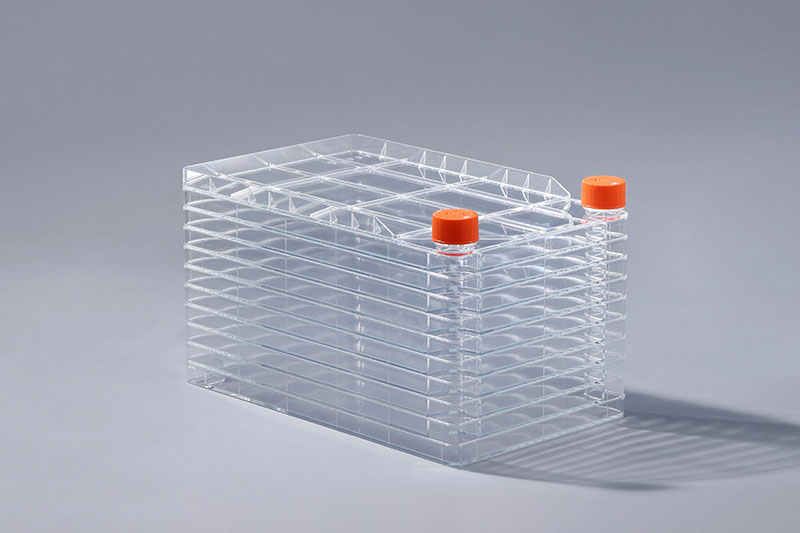Cell culture needs to be carried out in a sterile environment, so the containers for culturing cells need to be sterilized before they can be used. As a common container for large-scale cell culture, what is the sterilization method of the cell factory?
At present, our common sterilization methods include cobalt 60 sterilization, electron beam sterilization, ethylene oxide sterilization, high temperature and high pressure sterilization, etc. The cell factory uses cobalt 60 sterilization method. Cobalt 60 sterilization is the use of 60Coγ ray irradiation to act on microorganisms, directly or indirectly destroy the nuclei of microorganisms, thereby killing microorganisms and playing a role in disinfection and sterilization. It is one of the irradiation sterilization technologies, and is commonly used in medical, pharmaceutical, daily necessities, food and other fields.
FuDau 10 Layers Cell Factory
Cobalt 60 sterilization has the advantages of strong penetration, uniform and rapid sterilization, no drug residue, no environmental pollution, and low energy consumption. In my country, a national standard has been formed for cobalt 60 sterilization technology. Currently, the GB10252-2009 "Radiation Protection and Safety Specification for Gamma Irradiation Devices" standard is implemented, which is a relatively mature sterilization method.
At present, cobalt 60 irradiation sterilization is widely used in the field of life sciences, especially in the field of medical devices. The cell factory after sterilization can ensure that its surface does not contain microorganisms that are harmful to cells, thereby affecting cell culture experiments.
The FAI climbed 5.9 percent year-on-year in the first 11 months of 2018, quickening from the 5.7-percent growth in Jan-Oct, the National Bureau of Statistics (NBS) said Friday in an online statement.
The key indicator of investment, dubbed a major growth driver, hit the bottom in August and has since started to rebound steadily.
In the face of emerging economic challenges home and abroad, China has stepped up efforts to stabilize investment, in particular rolling out measures to motivate private investors and channel funds into infrastructure.
Friday's data showed private investment, accounting for more than 60 percent of the total FAI, expanded by a brisk 8.7 percent.
NBS spokesperson Mao Shengyong said funds into weak economic links registered rapid increases as investment in environmental protection and agriculture jumped 42 percent and 12.5 percent respectively, much faster than the average.
In breakdown, investment in high-tech and equipment manufacturing remained vigorous with 16.1-percent and 11.6-percent increases respectively in the first 11 months. Infrastructure investment gained 3.7 percent, staying flat. Investment in property development rose 9.7 percent, also unchanged.
 English
English



















































